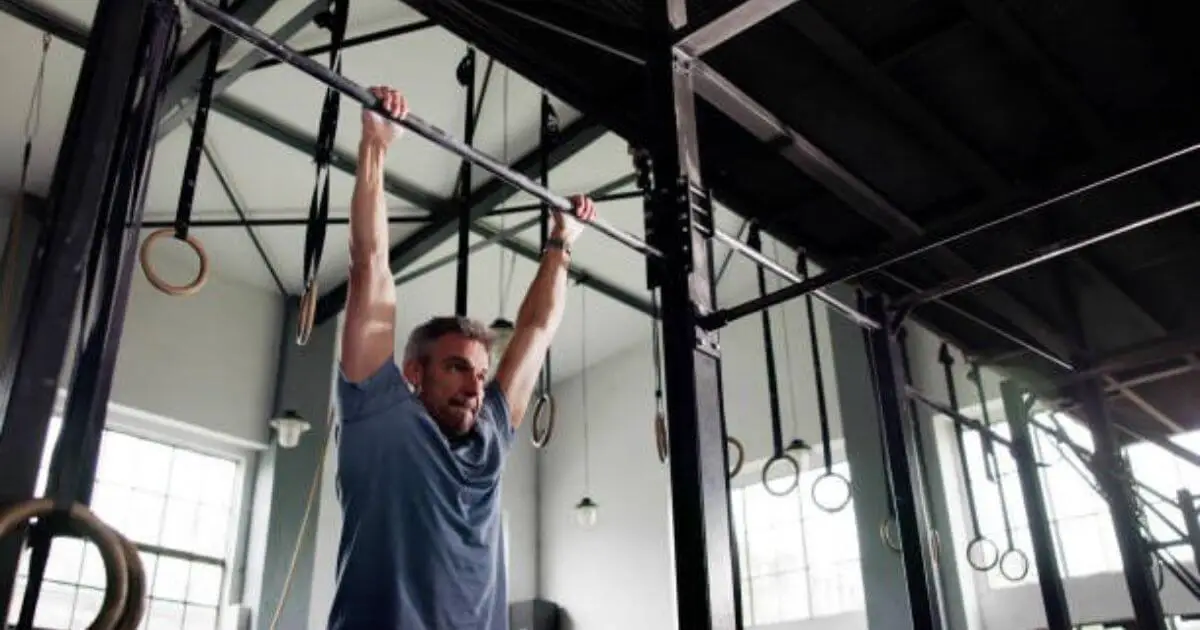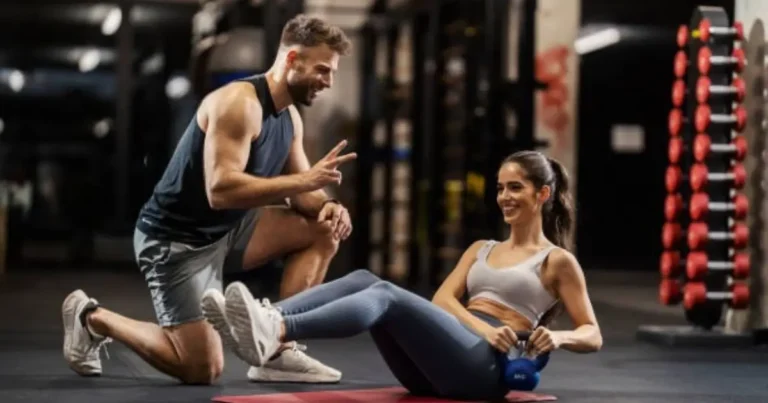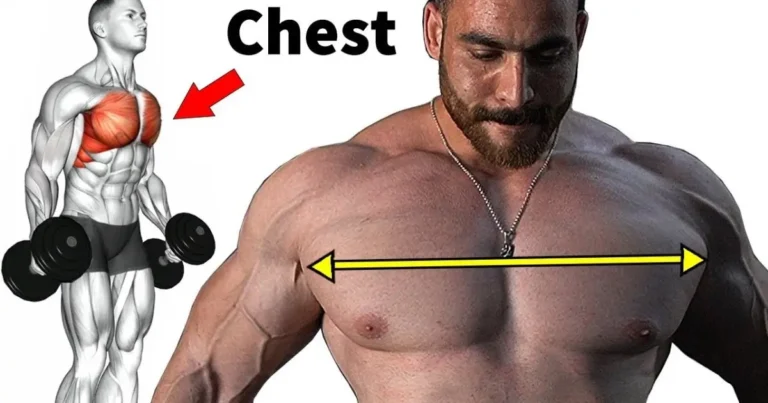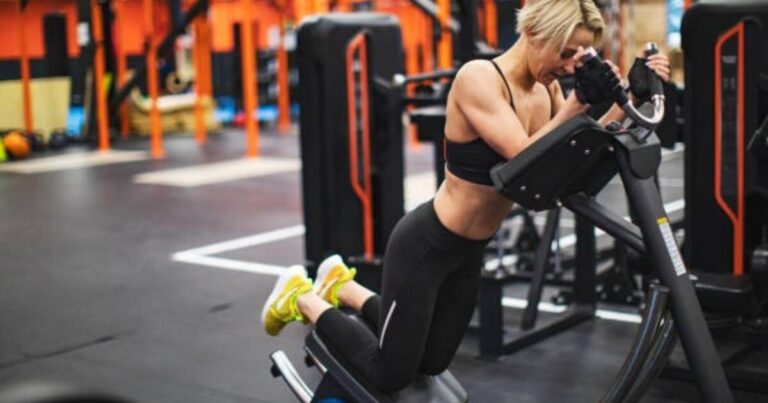The Ultimate Calisthenics Workout Plan (Beginner to Advanced)
Are you looking to build impressive strength, achieve greater mobility, and develop a lean, muscular physique without setting foot in a gym? A well-structured calisthenics workout plan might be exactly what you need. Using nothing but your own bodyweight as resistance, calisthenics offers one of the most accessible, functional, and rewarding approaches to fitness available today.
Unlike traditional weightlifting, calisthenics builds practical strength that translates directly to real-world movements. It develops exceptional body control, improves joint health, and can be performed virtually anywhere with minimal or no equipment. Whether you’re a complete fitness novice or an experienced athlete looking for a new challenge, calisthenics offers a progressive path to impressive physical capabilities.
Table of Contents
Before You Start: Calisthenics Fundamentals
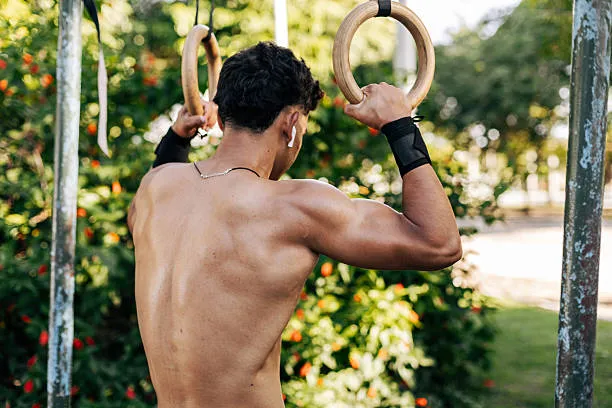
Before diving into specific workout plans, it’s essential to understand the fundamental principles that will ensure your calisthenics journey is both safe and effective.
Essential Warm-Up Routine
Every effective calisthenics workout plan begins with a proper warm-up. This primes your nervous system, increases blood flow to working muscles, and prepares your joints for the movements ahead.
Complete Dynamic Warm-Up (5-10 minutes):
- Arm circles (forward and backward): 10-15 each direction
- Shoulder rolls: 10-15 each direction
- Hip circles: 10 each direction
- Bodyweight squats: 15-20 reps
- Walking lunges: 10 each leg
- Inchworms: 5-10 reps
- Mountain climbers: 30 seconds
- Jump rope (or mimic the motion): 1-2 minutes
Pro Tip: Never skip your warm-up! Research shows that a proper dynamic warm-up can increase performance by up to 20% and significantly reduce injury risk.
Importance of Proper Form
In calisthenics, quality always trumps quantity. Proper form is essential not only for maximizing the effectiveness of each exercise but also for preventing injuries.
Key form principles:
- Maintain core engagement throughout all movements
- Control the eccentric (lowering) portion of exercises
- Achieve full range of motion when possible
- Breathe steadily and rhythmically
- Focus on the target muscles
Understanding Progression & Overload
Unlike weight training where you can simply add more plates to the bar, calisthenics progression follows different principles. To continuously build strength and muscle, you must progressively overload your body using these methods:
| Progression Method | Description | Example |
| Increase volume | Add more reps or sets | From 3×8 push-ups to 3×12 push-ups |
| Decrease rest time | Shorten recovery between sets | From 90 seconds rest to 60 seconds |
| Increase difficulty | Move to harder exercise variations | From regular push-ups to diamond push-ups |
| Adjust tempo | Change movement speed or add pauses | 3-second descent, 1-second pause at bottom |
| Add external resistance | Use weights or bands (advanced) | Weighted pull-ups or resistance band push-ups |
Understanding these progression principles is crucial for continued improvement in your calisthenics workout plan. When an exercise becomes too easy (you can complete all prescribed reps with perfect form), it’s time to progress to the next level.
Listening to Your Body & Safety
Calisthenics, like any training modality, requires attentive listening to your body’s signals:
- Differentiate between productive discomfort and potential injury pain
- Incorporate 1-2 rest days between training similar muscle groups
- Allow for adequate recovery, especially when learning new movements
- Scale back intensity if you experience joint pain or unusual discomfort
- Prioritize consistency over occasional heroic workouts
Basic Equipment (Optional but Recommended)
While calisthenics can be performed with no equipment at all, a few basic items can significantly expand your exercise options:
- Pull-up bar: Enables crucial pulling movements that are difficult to replicate without equipment
- Parallel bars or rings: Great for dips, rows, and more advanced movements
- Resistance bands: Assist with difficult movements or add resistance to easier ones
- Flat bench or elevated surface: Enables more exercise variations
No equipment? No problem! Many exercises can be modified using everyday objects like chairs, tables, or playground equipment.
Find Your Level: How to Choose the Right Plan
Before jumping into a specific workout regimen, determine your current fitness level to ensure you begin with appropriate challenges. Use this quick assessment to find your starting point:
| Exercise | Beginner | Intermediate | Advanced |
| Push-ups | 0-10 with good form | 15-30 with good form | 30+ or advanced variations |
| Pull-ups | 0-3 with good form | 5-10 with good form | 12+ or advanced variations |
| Bodyweight squats | Less than 25 | 30-50 | 50+ or pistol squats |
| Hanging leg raises | Knee raises only | Partial leg raises | Full leg raises to bar |
Choose the plan that matches your current abilities. Remember, starting at an appropriate level builds proper foundations and prevents frustration or injury.
The Beginner Calisthenics Workout Plan
Goal: Build foundational strength, master basic movements.
As a beginner, your primary focus should be on developing proper form, building baseline strength, and creating consistent workout habits. This plan emphasizes full-body workouts to maximize efficiency and frequency.
Schedule: 3 full-body workouts per week on non-consecutive days
Sample Weekly Layout:
- Monday: Full-body workout
- Tuesday: Rest or light activity (walking, stretching)
- Wednesday: Full-body workout
- Thursday: Rest or light activity
- Friday: Full-body workout
- Saturday/Sunday: Rest, active recovery, or mobility work
The Beginner Workout Routine
Complete 3 rounds of the following circuit:
- Bodyweight Squats

- 3 sets of 12-15 reps
- Rest: 60 seconds between sets
- Focus on: Pushing knees outward, keeping heels down, and maintaining an upright chest
- Incline Push-ups (hands on elevated surface)
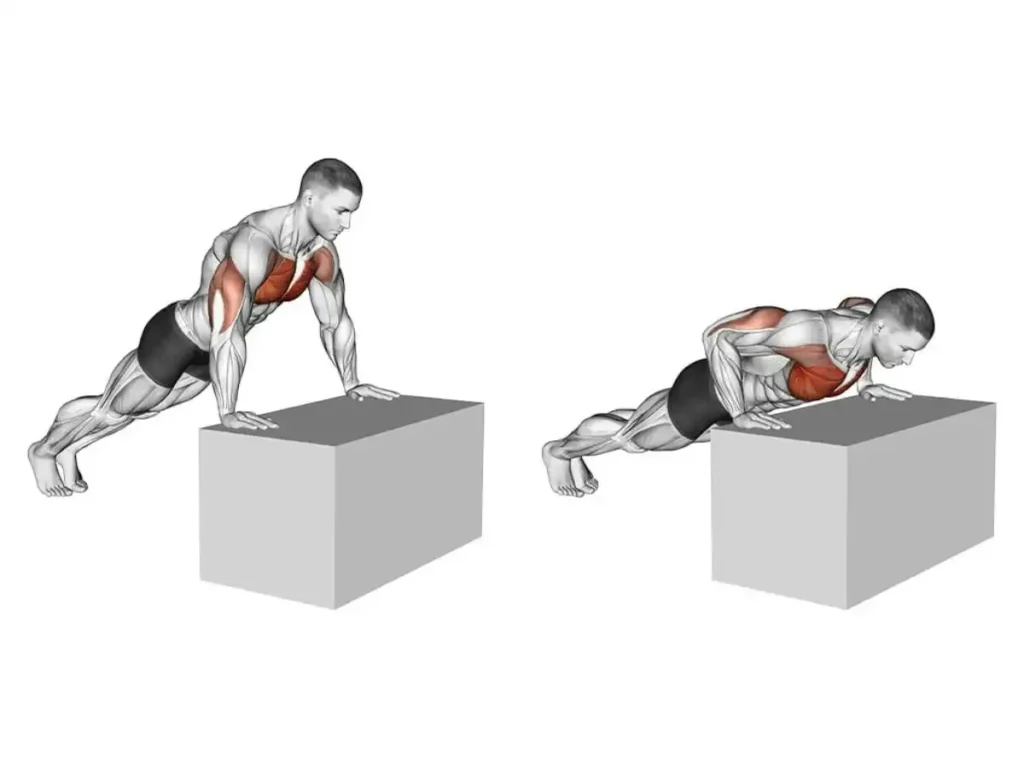
- 3 sets of 8-12 reps
- Rest: 60-90 seconds between sets
- Common mistakes: Sagging hips, flared elbows, incomplete range of motion
- Australian Pull-ups (bodyweight rows using a table or bar)
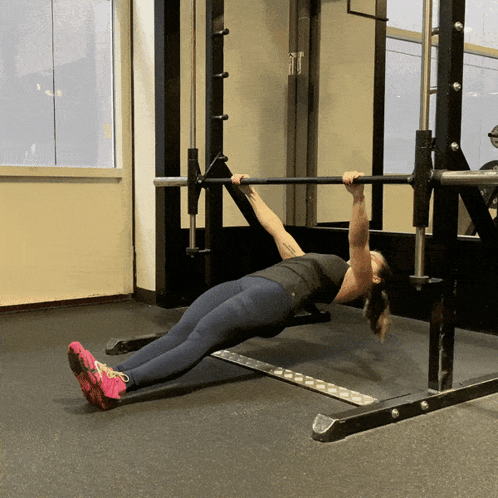
- 3 sets of 8-12 reps
- Rest: 60-90 seconds between sets
- Regression: Increase incline for easier version
- Plank
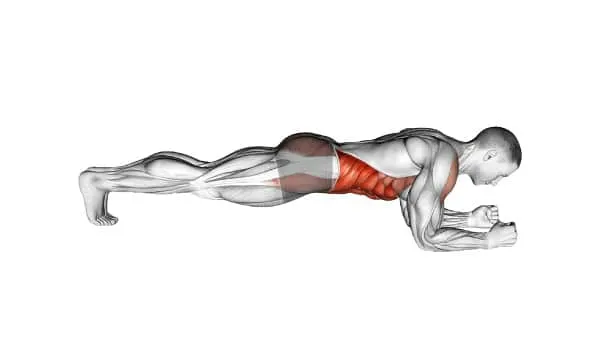
- 3 sets of 20-30 seconds
- Rest: 45-60 seconds between sets
- Focus on: Straight line from head to heels, engaged core
- Glute Bridges

- 3 sets of 12-15 reps
- Rest: 60 seconds between sets
- Focus on: Squeezing glutes at top position, avoiding lower back arching
- Bird Dogs (opposite arm/leg extensions)
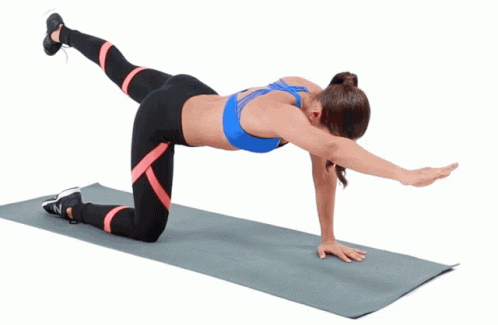
- 3 sets of 8-10 per side
- Rest: 60 seconds between sets
- Focus on: Maintaining neutral spine, moving slowly and controlled
Beginner Progression
You’re ready to advance to the intermediate plan when you can consistently:
- Complete 20+ perfect-form bodyweight squats
- Perform 10+ standard push-ups with proper form
- Hold a plank for 45+ seconds with good form
- Complete 10+ Australian pull-ups with good form
This typically takes 4-12 weeks, depending on starting fitness level and consistency.
The Intermediate Calisthenics Workout Plan
Goal: Increase strength, introduce harder variations, potentially start skill work.
At the intermediate level, you’ll begin incorporating more challenging exercise variations and can switch from full-body workouts to a split routine for more focused training.
Schedule: Push/Pull/Legs Split (4 days per week)
Sample Weekly Layout:
- Monday: Push (chest, shoulders, triceps)
- Tuesday: Pull (back, biceps)
- Wednesday: Rest
- Thursday: Legs & Core
- Friday: Rest or light activity
- Saturday: Full Body or repeat weak areas
- Sunday: Rest
The Workout Routines
Push Day:
- Standard Push-ups
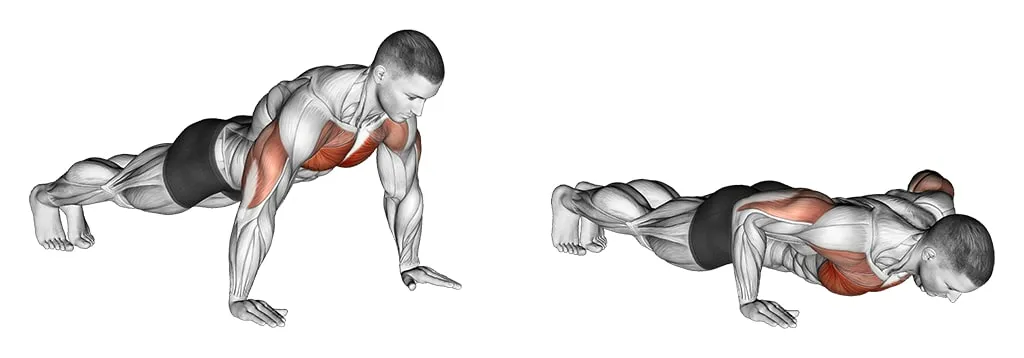
- 3-4 sets of 10-15 reps
- Rest: 90 seconds between sets
- Progression: Diamond push-ups or decline push-ups
- Dips (on parallel bars, chairs, or countertop)
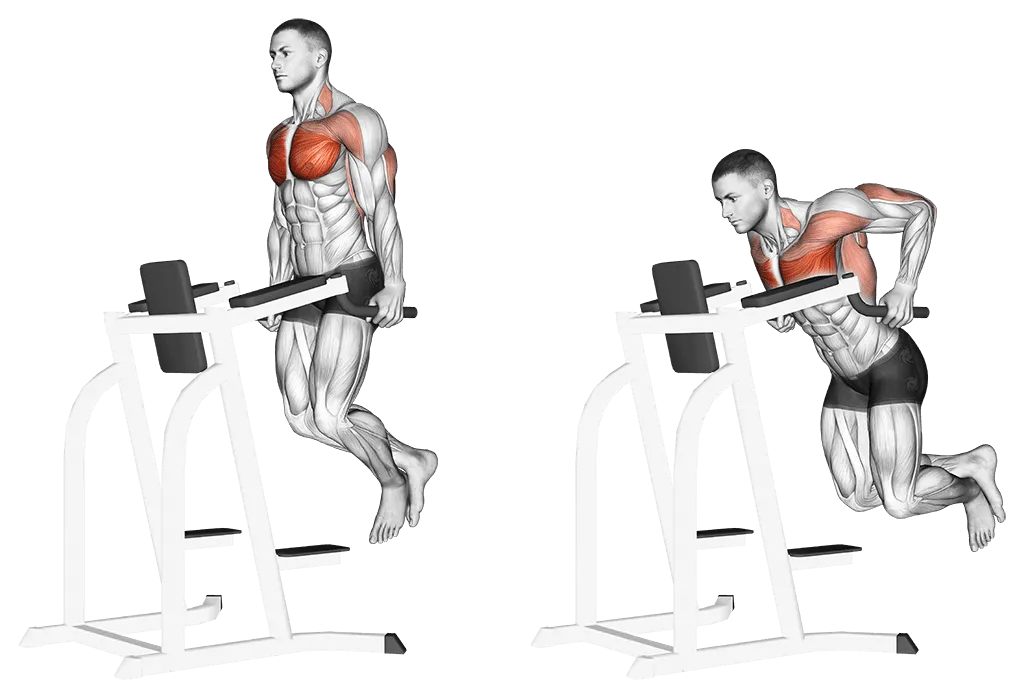
- 3 sets of 8-12 reps
- Rest: 90-120 seconds between sets
- Regression: Feet-assisted dips
- Pike Push-ups (handstand push-up preparation)

- 3 sets of 8-12 reps
- Rest: 90 seconds between sets
- Focus on: Shoulder engagement, controlled descent
- Planche Leans (skill preparation)
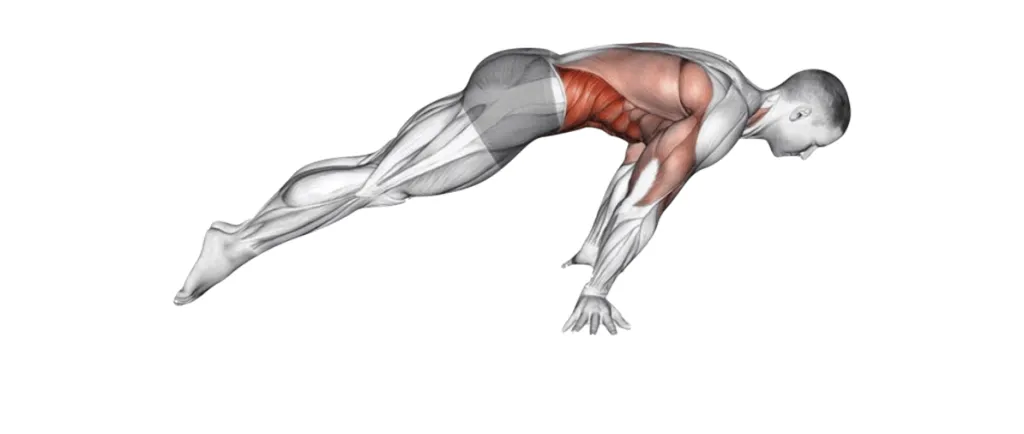
- 3 sets of 15-30 seconds
- Rest: 60 seconds between sets
- Focus on: Protracted shoulders, straight body
Pull Day:
- Pull-ups or Chin-ups

- 3-4 sets of 6-10 reps
- Rest: 120 seconds between sets
- Regression: Band-assisted or negative pull-ups
- Bodyweight Rows (horizontal pull)
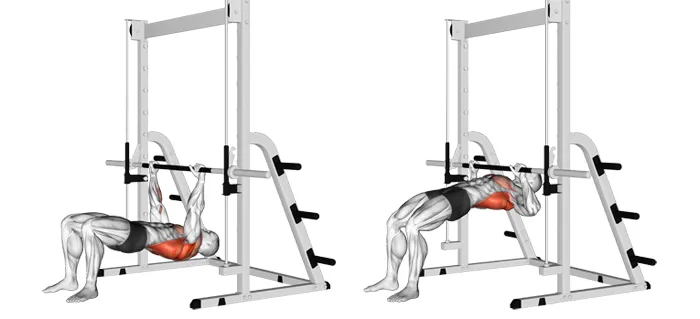
- 3 sets of 10-15 reps
- Rest: 90 seconds between sets
- Progression: Elevate feet for increased difficulty
- Scapular Pull-ups (strength & mobility)
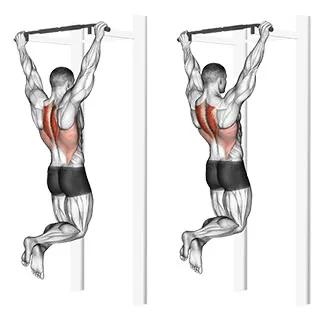
- 3 sets of 10-12 reps
- Rest: 60 seconds between sets
- Focus on: Full depression and elevation of shoulders
- Australian Chin-ups (supinated grip rows)
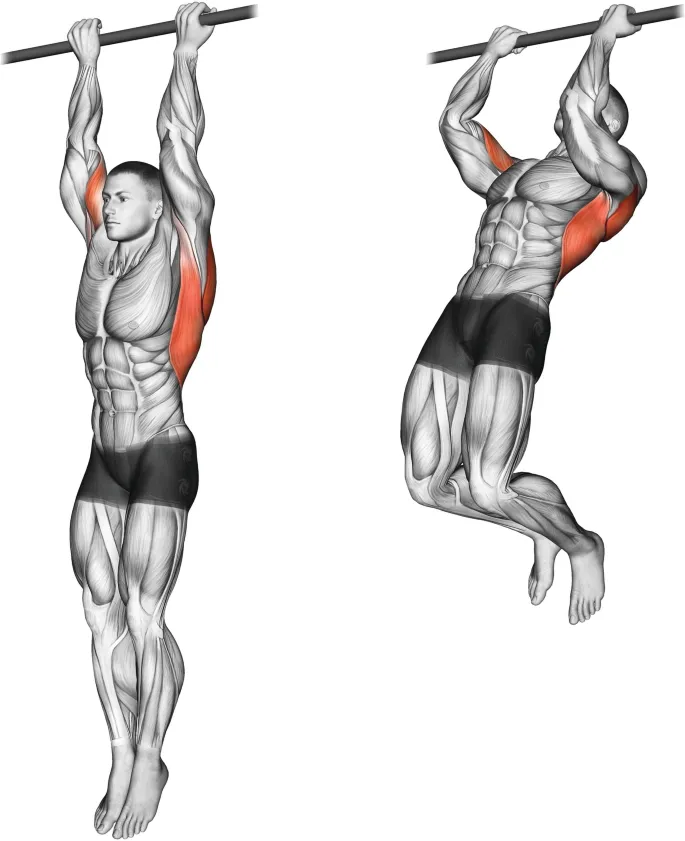
- 3 sets of 10-12 reps
- Rest: 90 seconds between sets
- Focus on: Bicep engagement, controlled movement
Legs & Core Day:
- Pistol Squat Progressions (assisted or partial)
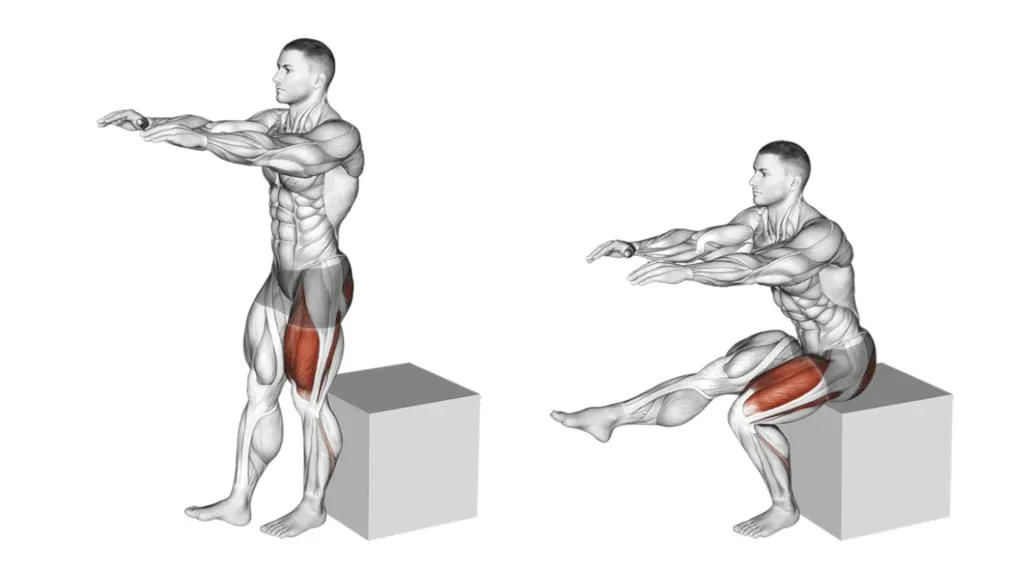
- 3 sets of 6-8 per leg
- Rest: 90 seconds between sets
- Regression: Hold support, reduce depth
- Walking Lunges
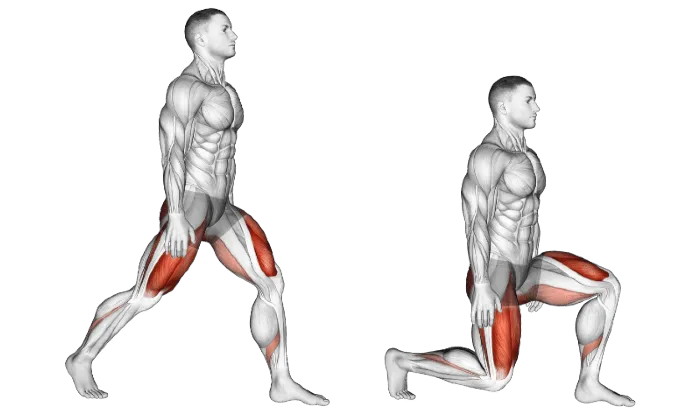
- 3 sets of 10-12 per leg
- Rest: 90 seconds between sets
- Focus on: Knee tracking, vertical torso
- Nordic Hamstring Curl Progression

- 3 sets of 6-10 reps
- Rest: 90 seconds between sets
- Regression: Reduced range of motion, partner assistance
- Hanging Knee Raises
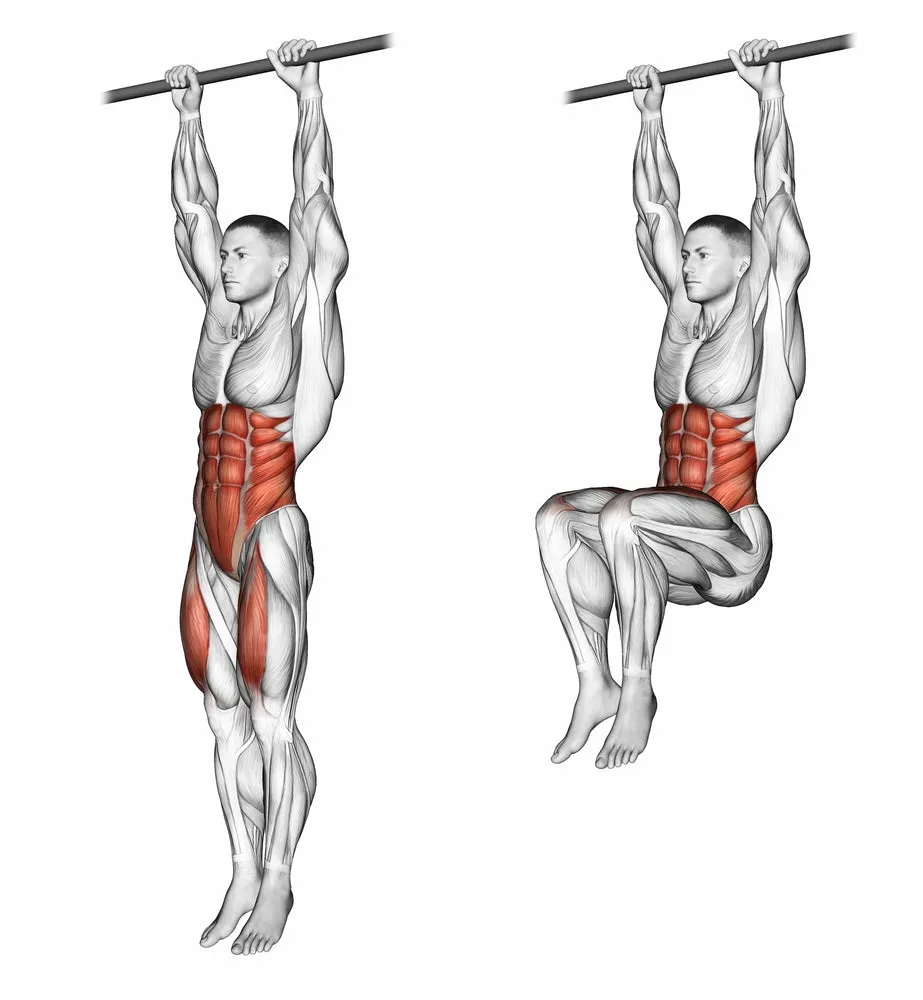
- 3 sets of 10-15 reps
- Rest: 60-90 seconds between sets
- Focus on: Hip flexion, not momentum
- Side Plank

- 3 sets of 30-45 seconds per side
- Rest: 60 seconds between sets
- Focus on: Straight body alignment, stable shoulders
Intermediate Progression
Consider moving to advanced training when you can:
- Perform 8+ clean pull-ups
- Complete 5+ dips with good form
- Execute partial pistol squats
- Hold advanced plank variations for 60+ seconds
The Advanced Calisthenics Workout Plan
Goal: Master advanced skills, achieve high levels of relative strength.
Advanced calisthenics practitioners typically focus on specific skill acquisition alongside continued strength development.
Schedule: 5-6 days per week with specialized focus
Sample Weekly Layout:
- Monday: Upper body strength + skill work (Planche)
- Tuesday: Lower body strength + skill work (Pistols/Levers)
- Wednesday: Push-focused + skill work (Handstands)
- Thursday: Pull-focused + skill work (Front Lever)
- Friday: Legs/Core + mobility
- Saturday: Skill integration or weak points
- Sunday: Rest or mobility work
The Workout Routine (Example: Upper Body Strength Day)
- Muscle-up Progression or full Muscle-ups
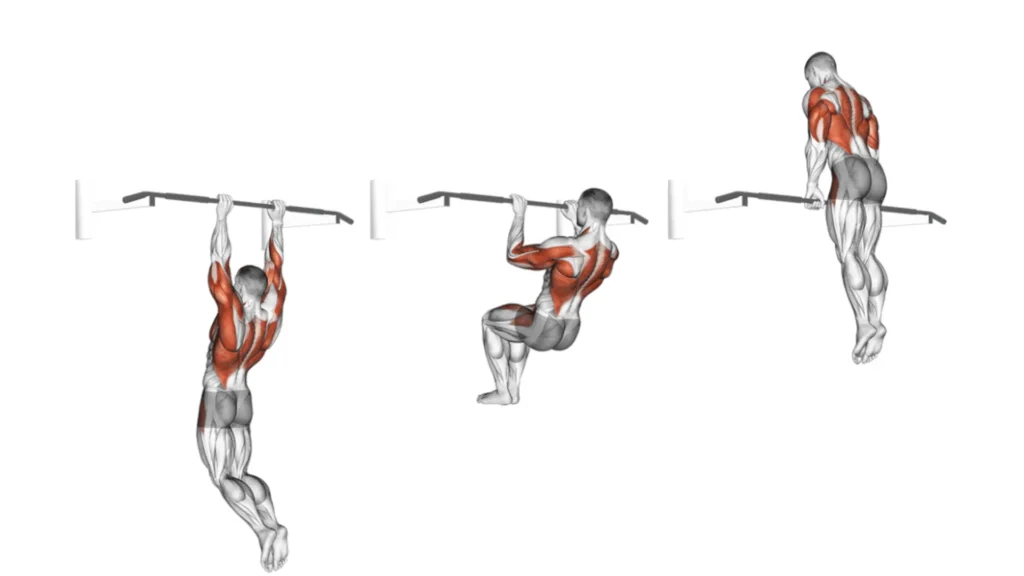
- 4-5 sets of 3-5 reps
- Rest: 2-3 minutes between sets
- Focus on: Clean transition, no kipping
- Handstand Push-up Progression
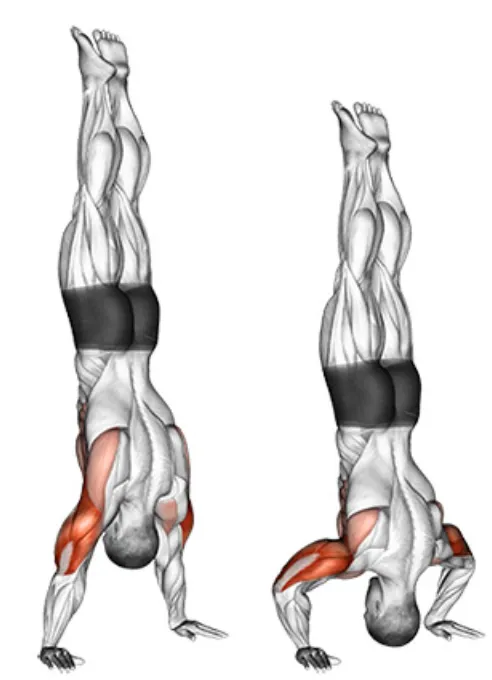
- 4 sets of 5-8 reps
- Rest: 2-3 minutes between sets
- Regression: Pike push-ups with elevated feet
- Weighted Pull-ups
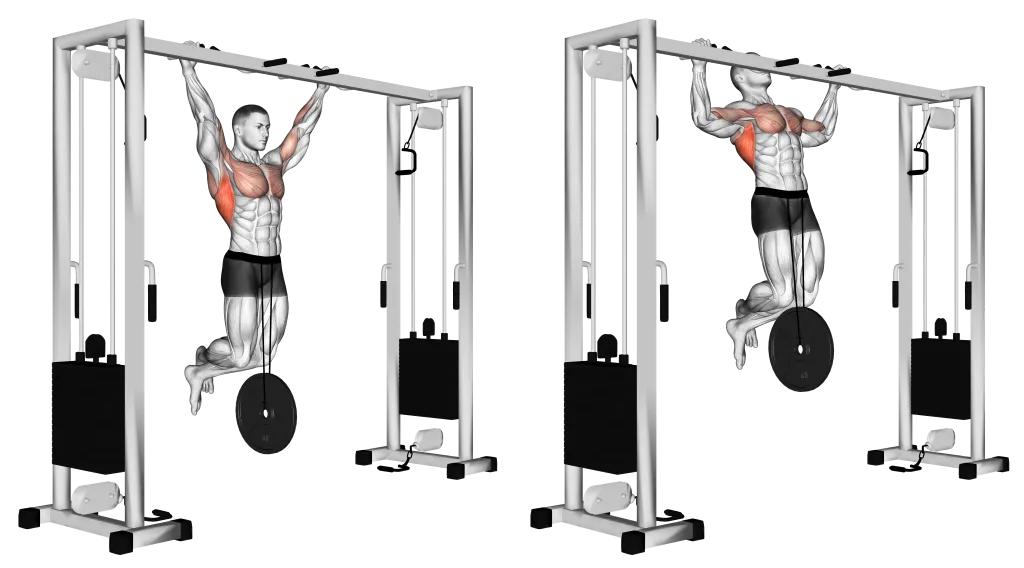
- 4 sets of 5-8 reps
- Rest: 2-3 minutes between sets
- Focus on: Full range of motion, controlled descent
- Ring Dips
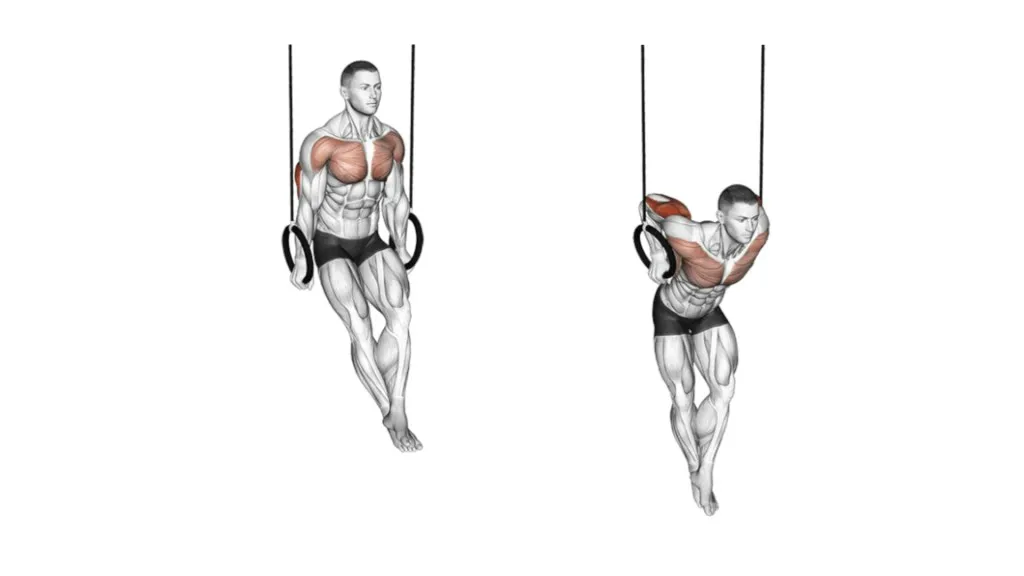
- 4 sets of 6-10 reps
- Rest: 2 minutes between sets
- Focus on: Stability, full extension at top
- Planche Training (leans, tuck planche, advanced progressions)
- 4-5 sets of skill work (holds or dynamic movements)
- Rest: 2-3 minutes between sets
- Focus on: Proper body position, progression appropriate to your level
Advanced Programming
At this level, consider implementing periodization:
- Strength Phase (4-6 weeks): Lower reps (3-5), higher intensity, longer rest
- Hypertrophy Phase (4-6 weeks): Moderate reps (8-12), moderate intensity
- Skill-Specific Phase (2-4 weeks): Focus on technical proficiency of target skills
- Deload (1 week): Reduced volume and intensity for recovery
Calisthenics Exercise Library
Push-Up
Muscles Worked: Chest, shoulders, triceps, core
Instructions:
- Start in a high plank position with hands slightly wider than shoulder-width
- Maintain a straight line from head to heels
- Lower your body by bending elbows until chest nearly touches the floor
- Push back up to starting position by fully extending arms
- Repeat for prescribed repetitions
Common Mistakes:
- Sagging hips or elevated hips
- Flared elbows (keep them at about 45° angle)
- Incomplete range of motion
- Holding breath
Regressions:
- Incline push-ups (hands on elevated surface)
- Knee push-ups
- Wall push-ups (for very beginners)
Progressions:
- Diamond push-ups (hands close together)
- Decline push-ups (feet elevated)
- Archer push-ups (asymmetrical loading)
- One-arm push-up progressions
Pull-Up
Muscles Worked: Lats, biceps, mid-back, forearms
Instructions:
- Hang from a bar with hands slightly wider than shoulder-width
- Engage your core and pull shoulder blades down and back
- Pull yourself up until chin clears the bar
- Lower with control to starting position
- Repeat for prescribed repetitions
Common Mistakes:
- Using momentum/kipping
- Incomplete range of motion
- Not engaging upper back
- Poor shoulder position
Regressions:
- Band-assisted pull-ups
- Negative pull-ups (jump up, lower slowly)
- Australian pull-ups (bodyweight rows)
Progressions:
- Wide grip pull-ups
- Weighted pull-ups
- Archer pull-ups
- One-arm pull-up progressions
Nutrition & Recovery for Optimal Results
Calorie & Macronutrient Basics
Your nutritional needs depend on your specific goals:
For Muscle Gain with Calisthenics:
- Calorie surplus of 200-300 calories/day
- Protein: 1.6-2.0g per kg of bodyweight
- Carbohydrates: 4-6g per kg of bodyweight
- Fats: 0.8-1.2g per kg of bodyweight
For Fat Loss while Maintaining Strength:
- Calorie deficit of 300-500 calories/day
- Higher protein intake (1.8-2.2g per kg) to preserve muscle
- Moderate carbohydrates, timed around workouts
- Adequate healthy fats (0.8-1g per kg)
Importance of Protein
Protein is especially crucial for calisthenics practitioners as it supports muscle repair and growth. Aim for complete protein sources distributed throughout the day:
- Lean meats, poultry, fish
- Eggs and dairy products
- Plant-based options: tofu, tempeh, legumes, quinoa
- Protein supplements if needed to meet targets
Pre & Post Workout Nutrition
Pre-Workout (1-2 hours before):
- Easily digestible carbohydrates + moderate protein
- Examples: Oatmeal with fruit and protein powder, toast with eggs, rice with lean protein
Post-Workout (within 30-60 minutes):
- Protein + carbohydrates to optimize recovery
- Examples: Protein shake with banana, Greek yogurt with berries, chicken with sweet potato
Sleep & Active Recovery
Quality sleep (7-9 hours nightly) is non-negotiable for optimal progress. Additionally, incorporate:
- Dedicated mobility work on rest days
- Light cardio (walking, swimming) for active recovery
- Proper hydration (minimum 3-4 liters daily)
- Stress management techniques (meditation, breathing exercises)
Tracking Progress & Staying Motivated
Why & How to Track Workouts
Consistent tracking allows you to objectively measure progress and ensure you’re applying progressive overload principles.
Tracking methods:
- Physical workout journal
- Fitness apps (Strong, Fitbod, etc.)
- Spreadsheets
- Video recording key movements
Track not just reps and sets, but also form quality, rest periods, and subjective feelings.
Setting Realistic Goals
Set both process and outcome goals:
- Process goals: Workout frequency, nutrition adherence, sleep quality
- Short-term outcomes: Specific rep targets, movement achievements
- Long-term outcomes: Advanced skills, physique changes, strength benchmarks
The SMART framework (Specific, Measurable, Achievable, Relevant, Time-bound) works particularly well for calisthenics progression.
Overcoming Plateaus
When progress stalls, consider these strategies:
- Implement a deload week (reduced volume/intensity)
- Change repetition ranges or tempo
- Add pre-exhaustion techniques
- Focus on weaker movement patterns
- Temporarily increase or decrease training frequency
- Review nutrition and recovery practices
Frequently Asked Questions (FAQ)
Q: Can you build significant muscle with just calisthenics? A: Absolutely! While the muscle-building stimulus differs from traditional weightlifting, calisthenics can build impressive muscle mass through progressive overload principles. Many elite calisthenics athletes showcase physiques comparable to bodybuilders.
Q: How long until I see results from my calisthenics workout plan? A: Most beginners notice strength improvements within 2-3 weeks, with visible physical changes typically appearing after 4-8 weeks of consistent training. Advanced skills may take months or years to develop fully.
Q: Do I need equipment for effective calisthenics training? A: While a pull-up bar significantly expands your exercise options, you can start with completely equipment-free routines. As you progress, minimal equipment like rings or parallel bars becomes more valuable.
Q: Is calisthenics better than weight training? A: Neither is universally “better” – they’re different tools with different strengths. Calisthenics excels at developing relative strength, body control, and functional movement patterns, while weights may be more efficient for absolute strength and targeted hypertrophy.
Q: Can women benefit equally from calisthenics training? A: Absolutely! While women may progress at different rates on certain exercises due to physiological differences, the fundamental principles and benefits apply equally. Many women achieve exceptional strength and skill levels through calisthenics.
Conclusion & Your Calisthenics Journey
The beauty of a well-designed calisthenics workout plan lies in its scalability and adaptability. Whether you’re taking your first fitness steps or pursuing advanced movement skills, the progressive nature of bodyweight training offers continuous challenges and rewards.
Remember that consistency trumps perfection. A sustainable approach that you can maintain long-term will always yield better results than sporadic intense efforts. Listen to your body, progress at your own pace, and celebrate each milestone along the way.
Your calisthenics journey begins today. Start with the appropriate level, master the fundamentals, and gradually build toward your goals. The strength, mobility, and body control you’ll develop will translate not just to impressive skills but to improved quality of movement in everyday life.
Take action now: Choose your starting level, schedule your first three workouts this week, and begin your transformation through the power of calisthenics.


